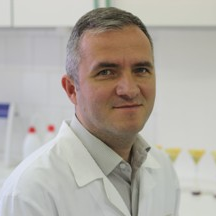Natural Terpenoid Alkaloids Therapeutic Perspectives
A special issue of Molecules (ISSN 1420-3049). This special issue belongs to the section "Natural Products Chemistry".
Deadline for manuscript submissions: closed (15 October 2021) | Viewed by 11816
Special Issue Editors
2. Institute for Translational Medicine, Faculty of Medicine, University of Pécs, Szigeti út 12, 7624 Pécs, Hungary
Interests: phytochemistry; pharmacognosy; phytotherapy; phytochemical analysis
Special Issues, Collections and Topics in MDPI journals
Interests: natural product chemistry on fungi; plants; marine organisms; comparative mass spectrometry-based metabolomics strategies for the investigation of natural products secondary metabolites; functional and healthy food; new drugs development
Special Issues, Collections and Topics in MDPI journals
Interests: apoptosis; cell culture; cancer biology; flow cytometry
Special Issues, Collections and Topics in MDPI journals
Special Issue Information
Dear Colleagues,
Diterpene alkaloids (DA) have been isolated primarily from Ranunculaceae species. To date, several hundred such compounds are known and many of these alkaloids have remarkable biological effects. Several DA-containing plants are known to be toxic plants. However, some of these in low doses or after careful processing have been applied in traditional medicine, especially in Asia.
An inhibitory or agonist effect on different ion channels is closely related to the toxic and pharmacologically useful effects of DAs. In the case of appropriate selective affinity to pharmacological targets, DAs can be used as medicines. Certain compounds form part of evidence-based medicine as antiarrhythmic drugs and several other alkaloids are under investigation for their effects on the central nervous system.
The goal of this Special Issue is to provide an overview of the current research results on DAs, including their isolation, structure elucidation, and semisynthetic modifications, and pharmacological investigations thereof.
Assoc. Prof. Dezső Csupor
Prof. Fang-Rong Chang
Prof. Mohamed El-Shazly
Guest Editors
Manuscript Submission Information
Manuscripts should be submitted online at www.mdpi.com by registering and logging in to this website. Once you are registered, click here to go to the submission form. Manuscripts can be submitted until the deadline. All submissions that pass pre-check are peer-reviewed. Accepted papers will be published continuously in the journal (as soon as accepted) and will be listed together on the special issue website. Research articles, review articles as well as short communications are invited. For planned papers, a title and short abstract (about 100 words) can be sent to the Editorial Office for announcement on this website.
Submitted manuscripts should not have been published previously, nor be under consideration for publication elsewhere (except conference proceedings papers). All manuscripts are thoroughly refereed through a single-blind peer-review process. A guide for authors and other relevant information for submission of manuscripts is available on the Instructions for Authors page. Molecules is an international peer-reviewed open access semimonthly journal published by MDPI.
Please visit the Instructions for Authors page before submitting a manuscript. The Article Processing Charge (APC) for publication in this open access journal is 2700 CHF (Swiss Francs). Submitted papers should be well formatted and use good English. Authors may use MDPI's English editing service prior to publication or during author revisions.
Keywords
- diterpene alkaloid
- norditerpene alkaloid
- Ranunculaceae
- vardiovascular
- central nervous system








